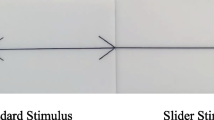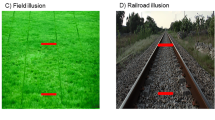Abstract
This paper is a defense of an internalist view of the perception of shapes. A basic assumption of the paper is that perceptual experiences have certain parts which account both for the phenomenal character associated with perceiving shapes—phenomenal shapes—and for the intentional content presenting shapes—intentional shapes. Internalism about perceptions of shapes is defined as the claim that phenomenal shapes determine the intentional shapes. Externalism is defined as the claim that perceptual experiences represent whatever shape the phenomenal shape reliably tracks. The argument against externalism proceeds in three steps. First, it is argued that phenomenal shapes are modality specific, such that a phenomenal shape that features in a visual perceptual experience cannot feature in a haptic perceptual experience, and vice versa. Second, it is argued that intentional shapes are amodal. Third, it is argued that externalism is incompatible with the fact that phenomenal shapes are modality specific and intentional shapes amodal.
Similar content being viewed by others
Notes
I should note from the beginning that I do not have the space to in this paper to discuss various positive attempts to construe twin earth experiments where identical experiences represent different shapes (cf Hurley 1998; Thompson 2010). Refuting the conclusions of these attempts requires an entirely different paper with a long detour through the metaphysics of space.
This objection was suggested by a referee.
An opponent could possibly retort that phenomenal shapes depend on either phenomenal colours or phenomenal solidity. Such a move would however be completely ad hoc and would introduce a very problematic notion of disjunctive dependence.
It might be thought that the present topic relates to Molyneux’s question, namely the question whether a person who was born blind could immediately recognize by sight shapes previously only encountered by touch if he was granted sight. Several studies indicate that this would not be the case. Yet this does not refute Amodality. As has been pointed out by Smith, the neural structures subserving vision are normally damaged when someone’s visual senses are not stimulated for a prolonged period. So the capacity that these subjects have when they are granted sight is presumably an impaired capacity. (Smith 2000: 496f) As a result, studies pertaining to capacities of Molyneux’s subjects presumably do not refute Amodality.
Campbell actually used two criteria, but the second does not seem applicable in this context.
The famous experiments by Meltzoff and Moore are also relevant to the present case. Meltzoff and Moore (1983) found that neonates as young as 42 min old were able to imitate facial expressions. Strictly speaking, this is not a case of visual-haptic identification, however, it does indicate an innate capacity for intermodal recognition of shapes; though in this case it is more with respect to proprioception and vision than to touch and vision.
I am here assuming that perceptual systems are informationally encapsulated in the sense that they are not sensitive to the beliefs and conceptual capacities of the perceiver. Thus, whereas perceptual content is normally available for cognition, the prior beliefs of the perceiver do not determine in any sense the content of the perceptual experience. Perceptual experiences are in this sense cognitively impenetrable. For a powerful defense of this claim, see Fodor (1983).
It is to be noted that whereas Sharon and Twin Sharon may have identical phenomenal lives, they presumably may differ with respect to internal physical states. Since we have defined the controversy between externalism and internalism in terms of whether the phenomenal character of the perceptual experience (rather than internal physical state) determines the intentional content of the experience, this difference is of no importance in this context.
The exact nature of the relationship between the phenomenal shape and the intentional shape is not something that we need to consider further in this paper. Clearly, several options are available to the internalist. The internalist may for example argue that phenomenal facts ground intentional facts. Or the internalist may argue that phenomenal shapes and intentional shapes are different properties of the perceptual experience which are related to each other in specific ways.
Thanks are due to Kristoffer Sundberg and two anonymous referees for many valuable comments on a previous draft. Genie Perdin helped correct my English in a previous draft. I bear sole responsibility for any errors in the final draft. The writing of this paper was funded by The Swedish Research Council (Research Grant 421-2011-1587).
References
Bayne, T. (2010). The unity of consciousness. Oxford: Oxford University Press.
Block, N. (1990). Inverted earth. Philosophical Perspectives, 4, 53–79.
Burge, T. (1986). Individualism and psychology. The Philosophical Review, 1986, 3–45.
Burge, T. (2010). Origins of objectivity. Oxford: Clarendon Press.
Campbell, J. (1987). Is sense transparent? Proceedings of the Aristotelian Society, 88, 273–292.
Chalmers, D. (2006). Perception and the fall from Eden. In T. S. Gendler & J. Hawthorne (Eds.), Perceptual experience (pp. 49–125). Oxford: Clarendon Press.
Crane, T. (2003). The intentional structure of consciousness. In Q. Smith & A. Jokic (Eds.), Consciousness. New philosophical perspectives. Oxford: Clarendon Press.
Evans, G. (1985). Collected papers. Oxford: Clarendon Press.
Farkas, K. (2003). What is externalism? Philosophical Studies, 112, 187–208.
Farkas, K. (2008). The subject’s point of view. Oxford: Oxford University Press.
Fodor, J. (1983). The modularity of the mind. Cambridge: The MIT Press.
Gibson, J. J. (1933). Adaptation, after-effect and contrast in the perception of curved lines. Journal of Experimental Psychology, 16, 1–31.
Harman, G. (1990). The intrinsic quality of experience. Philosophical Perspectives, 4, 31–52.
Heller, M. (1983). A haptic dominance in form perception with blurred vision. Perception, 12, 607–613.
Hurley, S. (1998). Consciousness in action. Cambridge: Harvard University Press.
Husserl, E. (1901). Logische Untersuchungen. Zweiter Band. In U. Panzer (ed.), As repr. in Husserliana, vol. XIX/1 and XIX/2. The Hague: Nijhoff, 1975/1984.
Martin, M. (2004). The limits of self-awareness. Philosophical Studies, 120, 37–89.
Meltzoff, A. N., & Borton, R. W. (1979). Intermodal matching by human neonates. Nature, 282, 403–404.
Meltzoff, A. N., & Moore, K. (1983). Newborn infants imitate adult facial gestures. Child Development, 54, 702–709.
Noë, A. (2004). Action in perception. Cambridge: The MIT Press.
Putnam, H. (1973). Meaning and reference. The Journal of Philosophy, 70, 699–711.
Rock, I., & Victor, J. (1964). Vision and touch. An experimentally created conflict between the two senses. Science, 143, 594–596.
Smith, A. D. (2000). Space and sight. Mind, 109, 481–518.
Smith, A. D. (2002). The problem of perception. Cambridge: Harvard University Press.
Snowdon, P. (2005). The formulation of disjunctivism. A response to fish. Proceedings of the Aristotelian Society, 105, 129–141.
Streri, A., & Gentaz, E. (2003). Cross-modal recognition of shape from hand to eyes in human newborns. Somatosensory and Motor Research, 20, 13–18.
Thompson, B. (2010). The spatial content of experience. Philosophy and Phenomenological Research, 81, 146–184.
Tye, M. (2002). Representationalism and the transparency of experience. Noûs, 36, 137–151.
Welch, R. B., & Warren, D. H. (1980). Immediate perceptual response to intersensory discrepancy. Psychological Bulletin, 88, 638–667.
Author information
Authors and Affiliations
Corresponding author
Rights and permissions
About this article
Cite this article
Almäng, J. An Argument for Shape Internalism. Erkenn 82, 819–836 (2017). https://doi.org/10.1007/s10670-016-9845-3
Received:
Accepted:
Published:
Issue Date:
DOI: https://doi.org/10.1007/s10670-016-9845-3




